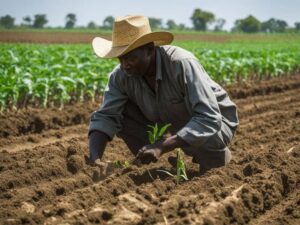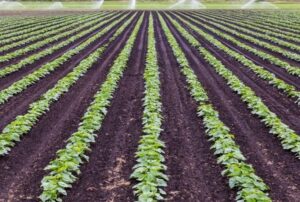5 Essential Things You Should Know About Seed Banks
Seed bank is a term that refers to a storage facility where seeds of various plants are preserved for future use. These collections play an essential role in maintaining biodiversity, supporting agriculture, and ensuring food security. In a world where climate change, natural disasters, and human activities pose significant threats to plant species, seed banks serve as an invaluable resource in protecting plant varieties and species for future generations. Understanding the concept, importance, and functionality of seed banks can provide a better appreciation for how they support sustainable agriculture and global food systems. In this article, we will explore five essential things you should know about seed banks.
1. What is a Seed Bank?
Seed banks are specially designed facilities that store seeds of various plant species, including food crops, medicinal plants, and endangered species. The seeds are kept in controlled environments that protect them from environmental factors such as temperature fluctuations, humidity, and pests. Seed banks are essential for preserving the genetic diversity of plant species, especially those that are facing extinction or are under threat due to climate change, habitat loss, or overexploitation.
The concept of a seed bank is not new. In fact, ancient civilizations, including the Egyptians and Chinese, have been known to store seeds for agricultural purposes for thousands of years. Today, modern seed banks use advanced technology and scientific methods to ensure the preservation and viability of seeds for future generations.
How Do Seed Banks Operate?
Modern seed banks typically store seeds at low temperatures, often in freezers, to slow down the aging process and maintain the seeds’ viability over long periods. They use methods such as cryopreservation to store seeds for years or even decades. Seed banks also carry out periodic tests to assess the germination rate of the stored seeds, ensuring that they are still viable when needed.
The collected seeds in a seed bank are typically organized by species and stored with detailed records regarding their origin, genetic information, and any relevant agricultural practices. This careful documentation allows for easy access to seeds when needed, whether for agricultural research, conservation efforts, or crop replanting.
If you’re interested in understanding how seed banks play a role in agricultural sustainability, you might also want to check out articles such as Top 10 Organic Farming Crops for Sustainable Agriculture, which discusses the importance of diverse crop species in organic farming.
2. The Importance of Seed Banks
The importance of seed banks cannot be overstated, especially in today’s world where climate change and other environmental challenges threaten food security. Seed banks are essential in preserving the diversity of plant species, ensuring that future generations can benefit from crops that may no longer exist in the wild. Below are some key reasons why seed banks are so important:
Biodiversity Preservation
One of the primary functions of seed banks is to preserve plant biodiversity. As many species face extinction due to habitat loss, climate change, and overuse of natural resources, seed banks serve as safe havens for plant genetic material. By storing seeds from a variety of plants, including food crops, medicinal plants, and endangered species, seed banks help maintain biodiversity and ensure that these plants can be revived if they go extinct in the wild.
Food Security
Seed banks play a crucial role in ensuring food security. Many of the crops we depend on for food, such as wheat, rice, and corn, are vulnerable to pests, diseases, and changing climate conditions. If one or more of these crops were to fail, seed banks can provide the seeds needed to replant and restore agricultural production. For example, if a crop species were decimated by a disease outbreak, seed banks could provide seeds to replace them and restore food supplies.
For a deeper dive into crops and their significance in sustainable farming, consider reading A Comprehensive Guide for Wheat Crop: Its Cultivation and Importance.
Research and Agricultural Development
Seed banks are also vital for scientific research. By preserving a variety of plant species, researchers can study the genetic diversity of crops and identify traits such as disease resistance, drought tolerance, and high yield. These studies are crucial for improving agricultural practices, especially as the world faces new challenges such as increasing populations and environmental pressures. Seed banks provide a valuable resource for developing new crop varieties that can withstand these challenges.
If you’re interested in learning more about sustainable agriculture and advanced farming practices, the article Top 5 Climate Smart Agriculture Practices to Boost Sustainable Farming could provide valuable insights.
3. How Seed Banks Contribute to Sustainable Agriculture
Seed banks are integral to the concept of sustainable agriculture. By preserving a wide variety of plant species, these facilities contribute to the long-term viability of agricultural systems. Sustainable agriculture involves practices that protect the environment, conserve resources, and promote biodiversity—all of which are supported by seed banks.
Crop Variety and Resilience
Sustainable agriculture relies on the use of diverse crops to ensure that farmers are less dependent on any one crop variety. If a single crop variety is threatened by disease or extreme weather conditions, a diverse selection of crops allows farmers to switch to other varieties that may be more resilient. Seed banks offer a vast array of crop varieties, ensuring that farmers have access to genetic diversity and can select the most suitable plants for their local conditions.
Moreover, as climate change disrupts traditional farming systems, seed banks provide a source of genetic material that can be used to develop more resilient crops. For example, research in seed banks has led to the development of drought-resistant wheat and pest-resistant corn varieties, which are essential for adapting to changing environmental conditions.
For a deeper understanding of organic farming and how it contributes to sustainability, explore Learn Organic Natural Farming for a Better Future.
Enhancing Crop Rotation and Soil Health
Crop rotation is a key practice in sustainable farming, as it helps maintain soil fertility and reduces the risk of pest infestations. Seed banks provide a range of crop varieties that can be used in rotation systems, improving soil health and minimizing the need for chemical fertilizers and pesticides. This approach contributes to organic farming and helps reduce the environmental impact of agriculture.
4. The Role of Seed Banks in Conservation Efforts
In addition to supporting agriculture, seed banks play a crucial role in plant conservation. Many plant species are facing extinction due to habitat destruction, overharvesting, and climate change. Seed banks serve as a lifeline for these plants, preserving their genetic material so that they can be reintroduced into the wild when conditions improve.
Preserving Endangered Plants
Seed banks store seeds from a variety of endangered plant species, many of which are at risk of disappearing from the wild. These plants may have medicinal, ecological, or agricultural significance, and their loss could have far-reaching consequences. By preserving the seeds of these plants, seed banks help ensure that they are not lost forever and can be reintroduced to their natural habitats if necessary.
Supporting Restoration Projects
Seed banks are also instrumental in ecological restoration projects. When ecosystems are damaged by deforestation, urbanization, or natural disasters, seed banks can provide the seeds needed to restore these environments. By replanting native species, seed banks help restore biodiversity and improve the overall health of ecosystems.
If you’re interested in understanding more about the role of plants in ecosystems, check out 5 Key Examples of Water Erosion and What You Can Learn.
5. How to Access Seeds from a Seed Bank
Accessing seeds from a seed bank typically requires specific procedures, as the seeds are often considered a valuable resource. Below are some ways in which individuals or organizations can obtain seeds from a seed bank.
Public and Private Seed Banks
There are both public and private seed banks around the world. Public seed banks are often funded by governments or international organizations and may allow farmers, researchers, and conservationists to access seeds for free or at a nominal cost. Private seed banks, on the other hand, may charge a fee for seed access and may focus on specific plant varieties, such as heirloom or organic crops.
Collaborative Efforts
Many seed banks participate in collaborative efforts to distribute seeds to those who need them. For example, local farming communities or conservation organizations may partner with seed banks to provide seeds to regions affected by crop failure or natural disasters. In these cases, the seeds are distributed to help restore agricultural production or support environmental recovery.
For those interested in starting their own seed-saving practices, check out Step-by-Step Guide to Starting Your Own Organic Natural Farming Journey.
In conclusion, seed banks are vital for preserving plant biodiversity, ensuring food security, supporting sustainable agriculture, and aiding conservation efforts. By storing seeds from a wide range of plant species, seed banks offer a valuable resource for future generations, ensuring that we have access to a diverse array of crops and plants that are essential for our survival. Whether for agricultural development, ecological restoration, or conservation, the role of seed banks in protecting plant species and fostering a sustainable future cannot be underestimated.














Post Comment